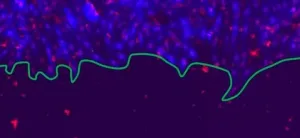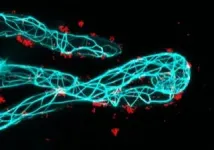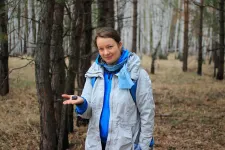Risk factors for multiple drug use
Study indicates that among the risk factors for an extreme form of multiple drug use or "polytoxicomania" are sexual and physical abuse, living in a big city, experience of migration as well as the use of cannabis and alcohol before the age of 18
2021-05-03
(Press-News.org) Many drug addicts take not only one substance but rather several. Scientists at the Max Planck Institute of Experimental Medicine in Göttingen have investigated the role that genes and the environment play in the development of such multiple substance consumption or polytoxicomania. Their results show that, in addition to genetic factors, the accumulation of several unfavourable environmental factors causes people to slip into such an extreme form of multiple drug use. Among the risk factors were sexual and physical abuse, living in a big city, and migration experience as well as the use of cannabis and alcohol before age of 18 years. Cannabis and alcohol may act as gateway drugs for vulnerable individuals, thereby paving the way to more problematic substance use.
They take prescription sleeping pills or narcotics, sniff glues, and use cocaine or ecstasy. Multiple substance use or polytoxicomania is the term used to describe when people use several types of drugs seemingly without particular preference. People with this disorder profile are often completely detached from normal social life.
How does the extreme form of consumption come about? "The reasons for polytoxicomania or multiple substance use have so far been given little attention", says Hannelore Ehrenreich, Head of Clinical Neuroscience at the Max Planck Institute of Experimental Medicine in Göttingen. "Unfortunately, the phenomenon is widespread and costs billions every year".
It is estimated that 8 to 18 percent of all teenagers in the US use three or more types of drugs on a regular basis and over a longer period of time. This phenomenon, called polytoxicomania, not only carries the risk of developing multiple substance dependencies but also often entails further psychological and physical damage. Using an exceptionally well-characterized study population of people with schizophrenia, the Max Planck researchers investigated factors that could explain why some people develop polytoxicomania while others do not.
Accumulation of unfavourable factors
The evaluation of this detailed data revealed that mainly the accumulation of several unfavourable environmental factors poses a high risk for later multiple substance use. Some of these risk factors can be prevented with relatively simple measures. One particularly critical factor is the use of cannabis before the age of 18 years, which more than doubled the probability of developing polytoxicomania in adulthood. Likewise, physical and sexual abuse, migration, and growing up in a big city as well as problematic alcohol consumption before the age of 18 years were recognized as unfavourable environmental factors. If several of these occurred at the same time, the probability of later multiple substance use, but also of aggressive behaviour and suicidal attempts greatly increased. In addition, those affected showed the first signs of schizophrenia at a much younger age. The disease (to which there was presumably already a genetic predisposition) thus appeared much earlier than in individuals who had not been exposed to any of these unfavourable environmental influences.
"The effect of the accumulation of these risk factors is often underestimated", says Agnes Steixner-Kumar, first author of the study. She too was surprised at how clearly the data was correlated. Many of the individuals who had been exposed to three or more risk factors in childhood and adolescence regularly used several types of drugs before reaching the age of 18 years.
Genetic risk factors
The researchers also examined the DNA in blood samples of the study participants and discovered several genetic variants that could contribute to the development of polytoxicomania. The results of this study, the only one to date to investigate the role of genetic predisposition in multiple substance use, must now be verified in replication studies. However, this is not without difficulties because worldwide there is no comparable sample of people with polytoxicomania who have been investigated so intensively regarding their substance use and possible environmental influences.
In order to develop effective prevention strategies and prevent young adults from slipping into this extreme form of drug use, the causes of multiple substance use must be better understood. Although it is not possible to change a person's genetic predisposition, social and political policies can at least ensure that susceptible individuals are not exposed to additional risk factors.
"Many prevention strategies tend to be based more on assumptions about which circumstances promote multiple substance use. That's why it is so important to answer these questions using scientific methods", says Ehrenreich. In the next step, the researchers plan to characterize the environment even more precisely. For example, although living in a big city is repeatedly associated with mental illness, it is not yet clear which aspects of city life are particularly problematic.
INFORMATION:
Original publication
Agnes A. Steixner-Kumar, Vinicius Daguano Gastaldi, Jan Seidel, Albert Rosenberger, Martin Begemann, Hannelore Ehrenreich
Preadult polytoxicomania--strong environmental underpinnings and first genetic hints
Molecular Psychiatry
Published: 07 April 2021
ELSE PRESS RELEASES FROM THIS DATE:
2021-05-03
Aromaticity, a concept usually used to explain the striking stability and unusual reactivity of certain carbon-based molecules, could inspire the design of new catalysts with novel uses, KAUST researchers have shown.
Chemists first came upon the anomalous behavior of aromatic molecules in the nineteenth century while studying benzene. The unexpected stability of this six-carbon cyclic structure comes down to its electrons.
In general, bonding electrons hold a specific pair of atoms together in a discrete chemical bond. But in benzene, six electrons form a delocalized ring across the molecule. A host of other molecules share this feature. "Many classic examples of organic and organometallic reactivity can be explained on this basis," says Théo Gonçalves, ...
2021-05-03
In material physics understanding how systems interact across the interfaces separating them is of central interest. But can physical models clarify similar concepts in living systems, such as cells? Physicists at the University of Geneva (UNIGE), in collaboration with the University of Zurich (UZH), used the framework of disordered elastic systems to study the process of wound healing - the proliferation of cell fronts which eventually join to close a lesion. Their study identified the scales of the dominant interactions between cells which determine this process. The results, published in the journal Scientific Reports, will allow better analysis of cell front behaviour, in terms of both wound healing and tumour development. In the future, this approach may offer personalised diagnostics ...
2021-05-03
Scientists are warning that drinking water supplies in parts of rural West Africa are being contaminated by lead-containing materials used in small community water systems such as boreholes with handpumps and public taps.
They analysed scrapings taken from the plumbing of 61 community water supply systems in Ghana, Mali and Niger. Eighty percent of the tested systems had at least one component that contained lead in excess of international guidance.
Lead is released into the water when the components corrode.
The study, by a research team from the University of Leeds, University of North Carolina at Chapel Hill and Boston University, also took samples of the water from those 61 water distribution systems, ...
2021-05-03
Migratory waterbirds are particularly exposed to the effects of climate change at their breeding areas in the High Arctic and in Africa, according to a new study published in Bird Conservation International. The research team came to this conclusion after modelling climatic and hydrological conditions under current and future climate scenarios (in 2050) and comparing the impact on the distribution of 197 of the 255 waterbird species listed under the Agreement on the Conservation of African-Eurasian Migratory Waterbirds (AEWA). The international team was led by Wetlands International, BirdLife International, and the British Trust for Ornithology, involved researchers from various universities, including McGill. The results suggest that investing more in habitat conservation in the wider ...
2021-05-03
A team of researchers led by Nanyang Technological University, Singapore (NTU Singapore) has developed a device that offers a quicker and less invasive way to seal tears and holes in blood vessels, using an electrically-activated glue patch applied via a minimally invasive balloon catheter.
This device could eventually replace the need for open or keyhole surgery to patch up or stitch together internal blood vessel defects.
After inserting the catheter into an appropriate blood vessel, the glue patch - nicknamed 'Voltaglue' - can be guided through the body to where the tear is located and then activated using retractable electrodes to glue it shut in ...
2021-05-03
Symptoms of health anxiety are common already during childhood and adolescence - and if the children do not receive the correct help, the anxiety can become a permanent problem with serious personal and socio-economic consequences. This is shown by a new research result from Aarhus University and the University of Copenhagen.
Ida is 11 years old. Six months ago, her grandmother died of cancer after a long illness and since then Ida has become more and more anxious that she too will get cancer and die. The anxiety can be triggered when she passes by a hospital or sees people who look ill. ...
2021-05-03
What would it be like to produce fertilizer in your own basement? Leguminous plants, like peas, beans, and various species of clover, obtain the organic nitrogen they need for their growth from symbiotic soil bacteria via specialized structures in their roots. A team led by the cell biologist Prof. Dr. Thomas Ott from the University of Freiburg's Faculty of Biology has now detected a factor in the root cells that the plants need for the initial contact with these so-called root-associated bacteria, which live in the soil. They discovered a protein found only in legumes called symbiotic formin 1 (SYFO1) and demonstrated the essential role it plays in symbiosis. Together with the molecular biologist Prof. Dr. Robert Grosse University of Freiburg's Faculty of Medicine and the evolutionary ...
2021-05-03
In a number of biological processes, iron-sulfur clusters play a vital role, where they act as cofactors to enzymes. Research published in Angewandte Chemie now shows that cubic clusters can support unusual bonding states. This study shows that the cluster copes well with a multiple bond between iron and nitrogen--a structural motif that may be involved in biological nitrogen fixation.
Clusters made of iron and sulfur atoms are essential cofactors for a number of enzymes, especially in biological processes involving electron transfer. As an example, nitrogen-fixing bacteria use iron-sulfur clusters to convert ...
2021-05-03
An international team of scientists from 20 countries identified 47 problems that hinder the successful prevention and elimination of the consequences of the tsunami. Based on the carried out analysis, the world's leading experts on natural hazards have outlined directions for further scientific research. The research group's review is published in a special issue of the "Frontiers in Earth Science".
The main problems identified in the review are related to the large gaps and uncertainties in knowledge about tsunami, the lack of well-documented observations, and imperfect methods of processing available information. One of the reasons is the lack of coordination of the efforts of those countries for which the study and prediction of tsunamis, forecasting the corresponding risks, and preparation ...
2021-05-03
Berlin, 3 May - In a new report, ALLEA, the European Federation of Academies of Sciences and Humanities, examines the potential of technical and policy measures to tackle science disinformation and calls for improved European exchange and coordination in this field.
While disinformation strategies are intoxicating public discourses in many fields, science disinformation is particularly dangerous to democratic governance and society at large. As highlighted by the ongoing pandemic, an undermining of trust in science poses a fundamental threat to political and individual decisions based on evidence and scientific knowledge.
Over ...
LAST 30 PRESS RELEASES:
[Press-News.org] Risk factors for multiple drug use
Study indicates that among the risk factors for an extreme form of multiple drug use or "polytoxicomania" are sexual and physical abuse, living in a big city, experience of migration as well as the use of cannabis and alcohol before the age of 18



